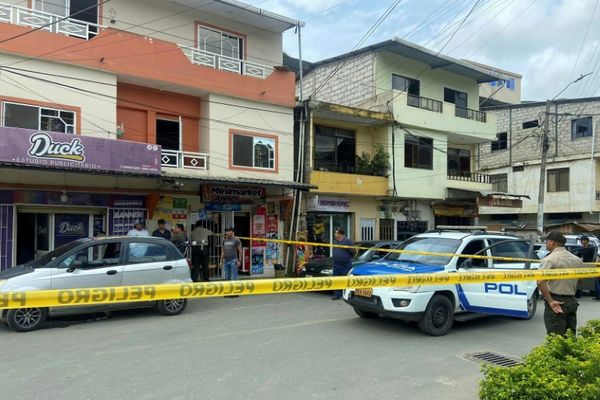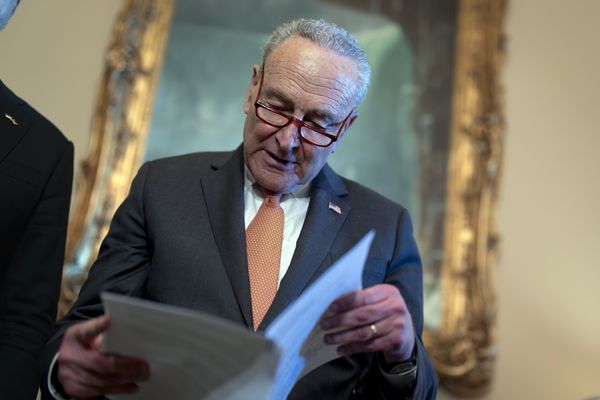
OTTAWA, Ont. — Defense Minister Anita Anand says Canada is examining the possibility of joining the United States' ballistic missile defense system, an openness that comes nearly two decades after Ottawa first rejected an invitation to participate.
"We are certainly taking a full and comprehensive look at that question as well as what it takes to defend the continent across the board," Anand said Tuesday in response to an audience question that followed her speech in Ottawa to the Canadian Global Affairs Institute.
"We are leaving no stone unturned in this major review of continental defense,” she said, promising there will be more to say "in the months to come."
Any step by Canada toward joining the system would mark a major policy shift. In February 2005, then-Liberal Prime Minister Paul Martin announced Canada would not take part in the U.S. ballistic missile defense, a move met with disappointment in Washington.
Anand's comments come as Canada launches a fresh rethink of its five-year-old military policy in the wake of Russia's invasion of Ukraine.
She also stressed that strengthening continental defense extends beyond the North American Aerospace Defense Command (NORAD). “We are taking a very bold and aggressive look at what we need to do for the defense of the North American continent,” Anand said.
A senior government official told POLITICO later Tuesday that the government has not changed its policy toward missile defense.
On the radar: Anand also shared new details about the review, outlining its focus on the emerging danger of hypersonic missiles, continental protection and the rising threat of war.
“We do live in a world at the present time that appears to be growing darker,” she said. “And in this new world, Canada's geographic position no longer provides the same protection that it once did. And in this new world, the security environment facing Canada is less secure, less predictable and more chaotic.”
With Russia’s war on Ukraine cited as impetus, Prime Minister Justin Trudeau’s budget last month promised a review of the country’s defense policy. Few other details about the rethink, including a timeline, have been announced.
Defending North America: Anand said the review will look to strengthen Canada’s domestic and continental defenses, including NORAD, as well as multilateral alliances, especially through NATO.
Canada will also reexamine how it engages in the Indo-Pacific and in response to “growing Chinese activity in the region,” Anand said. She committed to increase Canada’s presence on the world stage with more port visits, more training and more exercises with international partners and allies.
The existing policy: Canada’s 2017 defense policy, known as “Strong, Secure, Engaged,” will remain the foundational document for how the government supports and equips the Canadian Armed Forces.
“But threats are evolving quickly,” she said. “From hypersonics to cyberattacks to the reemergence of great power competition. In other words, the world we live in today differs from the threat assessments that underpin ‘Strong, Secure, Engaged.’”
She added, in French, that the review will “guarantee” the armed forces remain strong and capable, even in the face of new threats.
So far, the 2017 policy has produced results, she argued. Under the plan, for example, Anand said three out of Canada’s order of six Arctic offshore patrol ships have been delivered — and one has circumnavigated North America.
She also highlighted Canada’s decision in March to pursue a deal to buy 88 F-35s from Lockheed Martin. The government says it will spend up to C$19 billion to buy the warplanes to replace the Royal Canadian Air Force’s aging CF-18 fleet.
Anand said the F-35 announcement was “very important” for interoperability and discussions with the United States. “They are very pleased that we are going to be working on the same footing with regards to the future fighter capability,” she said.
More money: April’s federal budget also earmarked about C$8 billion in fresh military commitments over the next 5 years — an amount criticized as too incremental.
Taken together, the new investments will raise Canadian defense spending, as a share of GDP, to 1.5 percent after five years, a senior government official said. NATO estimated last week that Canada spent 1.36 percent of its GDP last year on the military.
For years, Canada has been under pressure by NATO allies, including the U.S., to boost its defense investments.
The budget’s spending package included a commitment of C$500 million for Ukraine.
Working in tandem: Asked Tuesday about how that funding will be used, Anand declined to share specifics. But she said Canada will continue to work with allies, and especially the U.S., when it comes to support to ensure it’s not making “one-off procurements.”
“We aren’t operating in a vacuum here,” she said. “The key will be to make meaningful investments with that C$500 million that we can rely on, and the Ukrainian Armed Forces can use to fight and win the war.”







